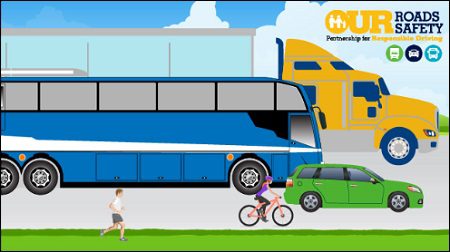Today’s state departments of transportation are focused less on building highways and more on safely moving people and goods by various modes, according to a group of state transportation department chief executives.
Leslie Richards, secretary of the Pennsylvania Department of Transportation, moderated the Jan. 9 panel on “State DOTs Harnessing All Modes to Move Everybody and Everything” during the annual Transportation Research Board meeting in Washington, D.C.
“A big priority for us is to give mobility options to all our residents,” Richards said of state DOTs.
She said the 2016 overhaul by the American Association of State Highway and Transportation Officials of its committee structure resulted in the creation of new “modal councils” that help illustrate how state DOTs officials are changing the way they view their roles in society.
The state agencies all developed from origins as highway departments to build and maintain roads, but many have over time spread out to either manage or support a wide range of transportation needs and infrastructure including bus and rail transit, bicycle and pedestrian trails or roadside lanes, ferry systems, airports, freight and passenger railroads, and marine ports.
Under the new structure, AASHTO’s main policymaking body is its Transportation Policy Forum, which includes separate modal councils for active transportation, aviation, highways and streets, rail, public transportation, water transportation and freight.
Utah DOT Executive Director and AASHTO Vice President Carlos Braceras noted that many state DOTs at one time were called “road” departments but eventually changed their names to “transportation” departments. But in Utah, he said, “it’s really been only recently that we’re emphasizing the fact that for us to be successful we need to be a fully intermodal transportation agency.”
Braceras also said the public expects better value for its investment to improve the state’s economy and its quality of life. “What we want to try to find is a way to be more effective and efficient,” he said, while trying to provide residents with the mobility they need across travel modes.
Shawn Wilson, secretary of the Louisiana Department of Transportation and Development, said his department is also incorporating a broader multimodal focus, in a departure from the past. “We’ve had that experience of dealing with policies over the last 30 years that have not been focused on a balanced transportation system,” he said.
Wilson listed four things he considers important when managing a comprehensive transportation system – safety, multimodal freight movement, support for rail and transit systems as complementary modes to highway travels and understanding that some projects take years to complete.
But ultimately, Wilson said, the possibilities depend on funding. “We have to find a way to fund all of those priorities,” he said. “If we don’t get that right then we’ll continually be in this analysis/paralysis around how do you build a better system.”
Minnesota DOT Commissioner Charlie Zelle agreed that changing his department’s name had not changed its culture. But he said the attitudes and department approaches shifted in part through listening to the public while developing a 50-year vision for its transportation program.
Zelle said the department asked people: “What do you want when you think of transportation?” But he said the answers had little to do with transportation projects and more to do with the quality of life residents hoped to achieve. As a result, MnDOT officials saw more clearly that residents wanted the transportation system to help them more easily reach their goals in work, recreation, accessing medical care or keeping in touch with loved ones.
“It really defined the vision that becomes the bedrock of our multimodal vision,” he said, “which is that we will maximize the health of our people, the environment and our economy.” Zelle said that in this mindset transportation supports an overall approach to quality of life by addressing health, safety and livability.
Jeff Marootian, director of the District of Columbia DOT, said his agency embraces a multimodal focus largely because of its unique standing among AASHTO departments – in that it functions as both a state and municipal transportation department.
He said D.C. is adding about 1,000 new residents a month, “which means we are thinking creatively and strategically about how we enhance and incentivize alternative modes of transportation across the city and throughout the region.”
Much like other state DOTs, Marootian said DDOT is investing in major capital projects that include a $1 billion overhaul of the Frederick Douglass Memorial Bridge over the Anacostia River and an expansion of its new streetcar system.
But DDOT has also embraced technologies that enhance use of existing infrastructure, such as a smartphone app that helps people find places to park their cars. “It’s about embracing technology, embracing what’s out there – things that we can use to mitigate congestion, to reduce carbon emissions and to make the traveling experience throughout the city as easy as possible,” he said.

